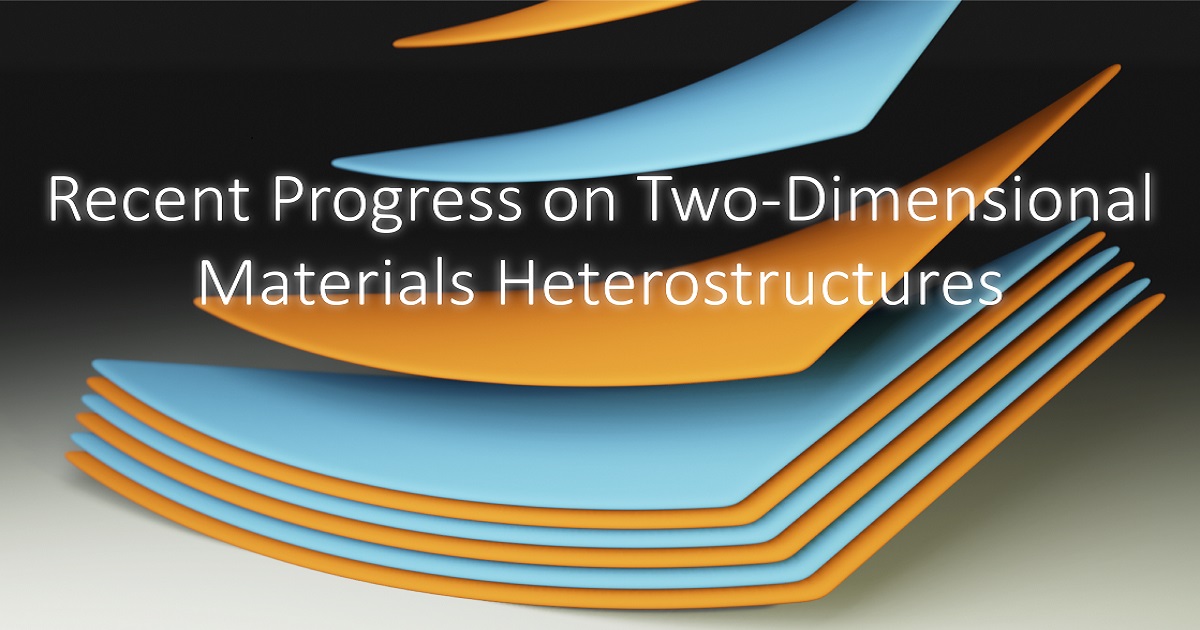Recent Progress on Two-Dimensional Materials Heterostructures
A special issue of Nanomaterials (ISSN 2079-4991). This special issue belongs to the section "2D and Carbon Nanomaterials".
Deadline for manuscript submissions: closed (31 July 2023) | Viewed by 4834

Special Issue Editors
Interests: nanotechnology; two-dimensional materials; two-dimensional semiconductors; metal-semiconductor interface; van der Waals heterostructures; devices; optoelectronics
Special Issues, Collections and Topics in MDPI journals
Interests: semiconductors; devices; two-dimensional materials; optoelectronics; strain engineering; metal-semiconductor contacts; van der Waals heterostructures
Special Issues, Collections and Topics in MDPI journals
Special Issue Information
Dear Colleagues,
The fabrication and understanding of heterostructures, especially semiconductor–semiconductor junctions and metal–semiconductor heterostructures, has had a profound impact on modern society. Most electronic and renewable-energy-generating devices that we currently use are in fact based on the union of dissimilar materials, which can give rise to emergent effects that are not simply the sum of the individual effects. Two-dimensional (2D) materials, such as van der Waals materials, layered perovskites or metal-organic frameworks, are characterized by outstanding optical, electrical, and mechanical properties. Thanks to their extreme aspect ratio, these materials are especially suited to the fabrication of heterostructures, and in recent years novel electronic and optoelectronic devices with exceptional performances have been reported. Apart from 2D–2D heterostructures, a second class of heterostructures has arisen, namely mixed-dimensional heterostructures based on the combination of 2D materials with 3D, 1D or 0D ones.
This Special Issue aims to collect original research articles and reviews about heterojunctions based on 2D materials, from both fundamental and application-oriented perspectives. We solicit papers dealing with the fabrication and properties of 2D material heterojunctions, or with their use in electronic or optoelectronic devices and sensors.
In this Special Issue, original research articles and reviews are welcome. Research areas may include (but are not limited to) the following:
- Van der Waals materials: graphene, black phosphorus, transition metal chalcogenides, III-VI group, MXenes, hexagonal boron nitride, 2D oxides, carbides, and nitrides;
- 2D metal-organic frameworks, 2D perovskites;
- Planar (lateral) and vertical 2D–2D heterostructures and their fabrication;
- 2D–2D heterojunctions and mixed-dimensionality heterojunctions: 2D–1D, 2D–0D, 3D–2D;
- Van der Waals heterostructures, superlattices, Moiré patterns, interlayer phenomena, interlayer excitons;
- Advanced devices and applications;
- Photonics, optics, electronics, optoelectronics, valleytronics, twistronics, straintronics;
- Metal–semiconductor ohmic and Schottky contacts;
- Semiconductor–semiconductor heterojunctions of type I, II, and III contacts;
- Semiconductor–semiconductor type I, II, and III contacts.
We look forward to receiving your contributions.
Dr. Riccardo Frisenda
Dr. Qinghua Zhao
Guest Editors
Manuscript Submission Information
Manuscripts should be submitted online at www.mdpi.com by registering and logging in to this website. Once you are registered, click here to go to the submission form. Manuscripts can be submitted until the deadline. All submissions that pass pre-check are peer-reviewed. Accepted papers will be published continuously in the journal (as soon as accepted) and will be listed together on the special issue website. Research articles, review articles as well as short communications are invited. For planned papers, a title and short abstract (about 100 words) can be sent to the Editorial Office for announcement on this website.
Submitted manuscripts should not have been published previously, nor be under consideration for publication elsewhere (except conference proceedings papers). All manuscripts are thoroughly refereed through a single-blind peer-review process. A guide for authors and other relevant information for submission of manuscripts is available on the Instructions for Authors page. Nanomaterials is an international peer-reviewed open access semimonthly journal published by MDPI.
Please visit the Instructions for Authors page before submitting a manuscript. The Article Processing Charge (APC) for publication in this open access journal is 2900 CHF (Swiss Francs). Submitted papers should be well formatted and use good English. Authors may use MDPI's English editing service prior to publication or during author revisions.
Keywords
- van der waals materials
- 2D metal-organic frameworks and 2D perovskites
- 2D–2D heterostructures
- mixed-dimensionality heterostructures: 2D–1D, 2D–0D, 3D–2D
- heterostructure fabrication
- van der waals heterostructures, superlattices, moiré patterns
- advanced devices and applications
- photonics, optics, electronics, optoelectronics
- metal–semiconductors
- semiconductor–semiconductor heterojunctions
Benefits of Publishing in a Special Issue
- Ease of navigation: Grouping papers by topic helps scholars navigate broad scope journals more efficiently.
- Greater discoverability: Special Issues support the reach and impact of scientific research. Articles in Special Issues are more discoverable and cited more frequently.
- Expansion of research network: Special Issues facilitate connections among authors, fostering scientific collaborations.
- External promotion: Articles in Special Issues are often promoted through the journal's social media, increasing their visibility.
- e-Book format: Special Issues with more than 10 articles can be published as dedicated e-books, ensuring wide and rapid dissemination.
Further information on MDPI's Special Issue polices can be found here.







